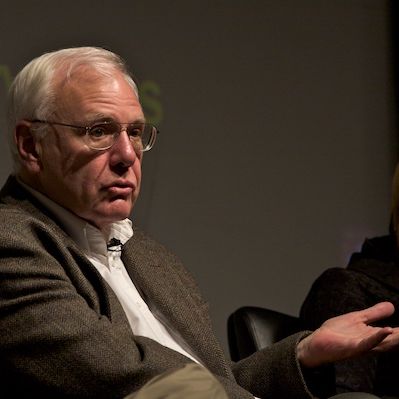
In a very real way, the thing that you’re using to read these words — whether that’s your desktop computer, laptop, smartphone, or tablet — exists because of the work of Charles Thacker, who passed away in Palo Alto on Monday, June 12, at the age of 74.
Thacker was the main designer behind the Xerox Alto, the first modern PC with a graphical user interface (GUI), complete with resizable windows, a mouse-based interface, and icons representing data files. Released in 1973, the computer was a commercial failure but a conceptual revolution; separate visits by Steve Jobs and Bill Gates to Xerox’s Palo Alto Research Center to see the machine eventually led to the creation of the Macintosh and Windows operating systems. The Alto also used Ethernet, another invention Thacker worked heavily on, creating an easy way to network personal computers.
In an interview in 2010, Thacker reminisced about the creation of the Alto:
“We knew it was revolutionary. We built it with the very first semiconductor dynamic RAM, the Intel 1103, which was the first memory you could buy that was less than a tenth of a cent a bit. As a result, we realized we could build a display that was qualitatively better than what we had at the time. We had character generator terminals, and some of them were quite nice. But they were limited in various ways, whereas the Alto had the property that anything you could represent on paper, you could put on the screen. We knew that was going to be a big deal.”
After the Alto, Thacker’s main focus became creating a tablet computer. Fellow Xerox engineer Alan Kay had the idea for what he called a “Dynabook,” — a computer with the form factor of a book that would be permanently networked, allowing for its contents to be continuously updated. Thacker took the idea and ran with it, eventually migrating to Microsoft where he worked on their Tablet PC, released in 2002. Again, while Microsoft’s version of the tablet was not a success, it laid the foundation for tablet computers to come — including, of course, the iPad.
In an email to Ars Technica, Thomas Haigh, a computer historian and professor at the University of Wisconsin, Milwaukee, wrote: “Alto is the direct ancestor of today’s personal computers. It provided the model: GUI, windows, high-resolution screen, Ethernet, mouse, etc. that the computer industry spent the next 15 years catching up to. Of course others like Alan Kay and Butler Lampson spent years evolving the software side of the platform, but without Thacker’s creation of what was, by the standards of the early 1970s, an amazingly powerful personal hardware platform, none of that other work would have been possible.”





























